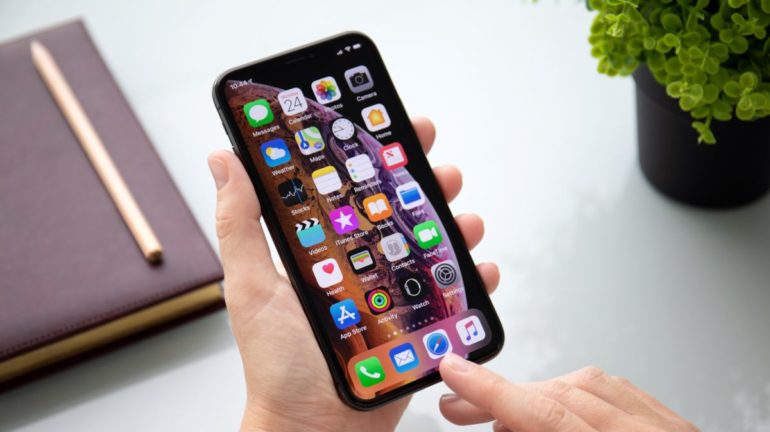It’s been a busy week for the iPhone 13 rumor mill. From improved storage to an in-screen fingerprint scanner, Apple’s next device looks set to finally bring something truly new to the smartphone table.
Typically, Apple’s flagship devices pack a few performance and camera upgrades over their predecessors, without pushing the boat out in terms of new features or groundbreaking tech. Not since the iPhone X has Apple really shaken up the design of its iPhones, and while we’re big fans of the iPhone 12 family, we’re excited to learn of some potentially market-leading bells and whistles on its upcoming range of smartphones.
Below, we’ve rounded up all the latest leaks and rumors surrounding the iPhone 13. It’s worth taking each revelation with a pinch of salt, but we’ll find out exactly what to expect when Apple officially launches the device in September 2021.
Want the full picture on the iPhone 13? Here’s everything we know so far
1. 1TB of storage
A recent report claimed that Apple may be planning on releasing an iPhone 13 model with up to 1TB of storage, potentially marking the first time the Cupertino company has offered such room in its iPhones (1TB versions of the iPad Pro have existed since 2018).
At present, Apple’s iPhone 12 Pro and iPhone 12 Pro Max models offer users 512GB of storage – the largest of any iPhones so far – and both are eye-wateringly expensive. We dread to think, then, how much a 1TB-toting iPhone 13 Pro might cost.
This isn’t the first time the rumor has emerged, either – the YouTube channel Front Page Tech made the same claim back in January – so we’d say it’s a pretty safe bet to assume the iPhone 13 will come with this impressive storage capacity.
2. An in-screen fingerprint scanner
Since the home button-less advent of the iPhone X in 2017, Apple’s iPhones have opted for Face ID technology over the fingerprint scanners of old.
In 2021, though, Apple could be going back to its roots. Apple leaker Mark Gurman has suggested the iPhone 13 could come with an in-screen fingerprint scanner, bringing the device in line with almost every flagship Android phone on the market right now.
Basically, an in-screen fingerprint scanner is exactly what it sounds like: a scanner that fits under the display and (you guessed it) reads your fingerprint. Whether Apple will ditch Face ID to make this feature the go-to biometric entry point for its newest iPhones remains to be seen, but we’ll bet the company opts to give users the option to choose.
3. Improved LiDAR sensors
Another recent report suggests the iPhone 13 family will get LiDAR camera improvements across the board. Among iPhone 12 models, only the iPhone 12 Pro and iPhone 12 Pro Max variants came with LiDAR sensors.
LiDAR (or ‘Light Detection and Ranging’) technology works in a similar way to radar, but uses lasers to judge distances and depth. In short, the tech lets you scan and map your environment by firing out laser beams, then timing how quickly they return. These sensors have been seen a lot on self-driving cars, and Apple’s premium iPhone 12 models use them to enable instant AR experiences.
The tech isn’t without its issues on mobile, though. The scanners on the iPhone 12 and 12 Pro are designed more for room-scale applications like games or shifting around AR furniture in IKEA’s Place app, but they don’t currently let you 3D scan objects with greater accuracy than other techniques like photogrammetry, which instead combines high-resolution RGB photos taken from different vantage points.
It would be great to see the iPhone 13 family employ some improved LiDAR sensors, maybe to be combined with the kind of resolution and textures seen by RGB cameras or Face ID.
4. Improved 5G speeds
After reports emerged that the iPhone 13 lineup is expected to use Qualcomm’s Snapdragon X60 modem, we’re excited to see whether the upcoming devices will come with improvements to 5G. The reasoning is a little complicated, so bear with us.
Apple used a 7nm-based Snapdragon X55 modem on its iPhone 12 family, and a chipset built on a 5nm process would allow for better power efficiency, and therefore better battery life in the iPhone 13. But this improved modem would also be able to group 5G data from both mmWave and sub-6GHz bands simultaneously, allowing the device to achieve the optimal combination of high-speed and low-latency network coverage.
Basically, mmWave is a set of 5G frequencies that promise ultra-fast speeds at short distances, while sub-6GHz 5G frequencies are competitively slower, but the signals travel further. A 5nm-based modem on the iPhone 13, as reports suggest, would allow for both types of frequency at the same time, meaning faster 5G speeds across the world (currently, mmWave support is limited to iPhone 12 models in the US).
5. No ports
Although rumors of a port-less iPhone 13 have been swirling for a while, recent information obtained by Appleosophy has shed new light on how exactly Apple plans to implement an iPhone without a Lightning connection.
Allegedly, Apple engineers are exploring a method of iPhone recovery over the internet, which would mean using Wi-Fi or Bluetooth rather than a physical cable to reset an iPhone. Currently, you need a physical connection to a PC or Mac when restoring an iPhone through any means other than via iOS settings, but the iPhone 13 might not require the same physical tethering.
Instead, reports indicate the device would broadcast a sort of help signal through Wi-Fi or Bluetooth, which would enable a computer connection. Alternatively, the smartphone could launch and go through the recovery process all by itself, once it gets online.
As with most rumors regarding the iPhone 13, details on exactly how Apple plans to implement this change are scarce and unconfirmed, but we’d love to see an Apple smartphone finally bereft of orifices.



